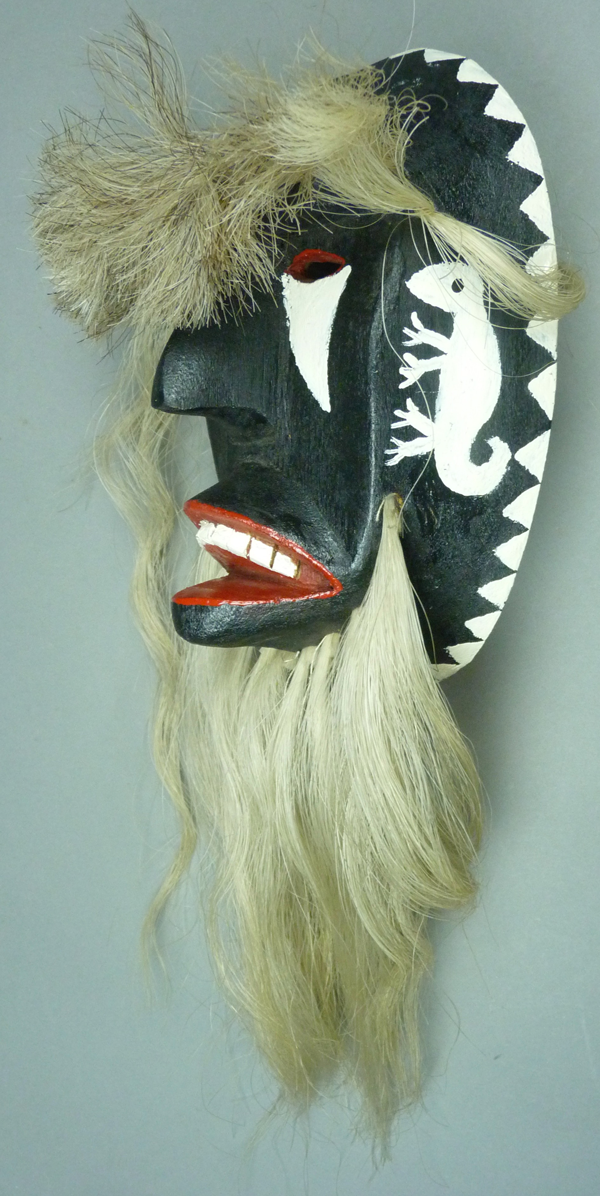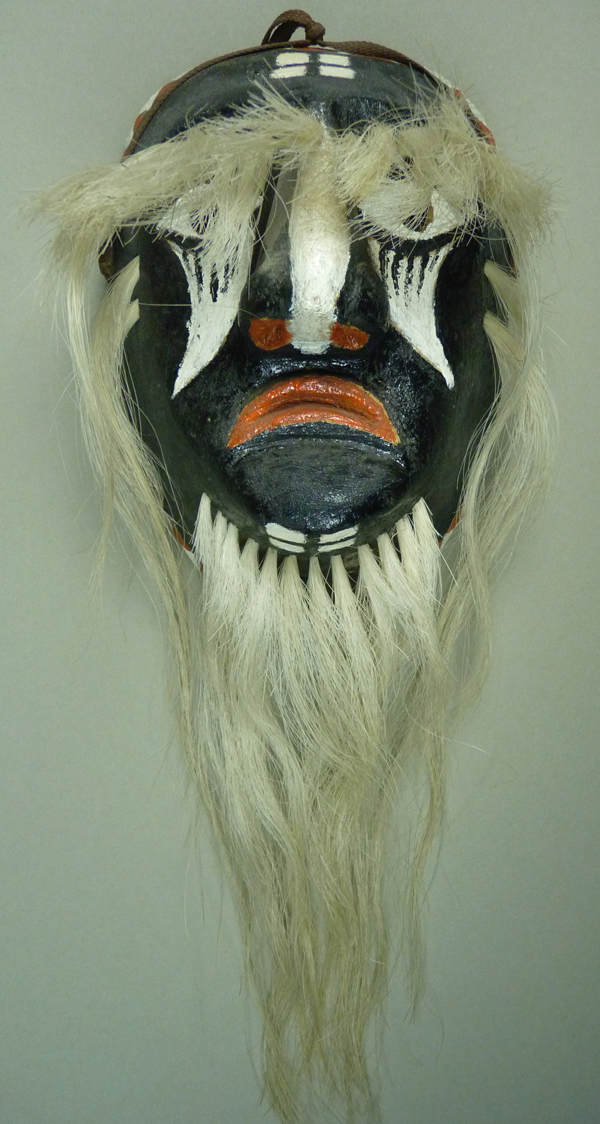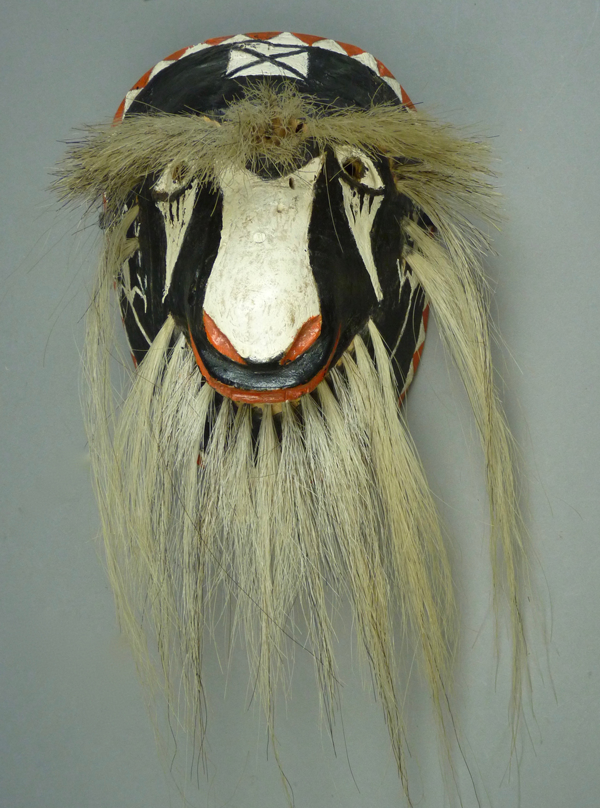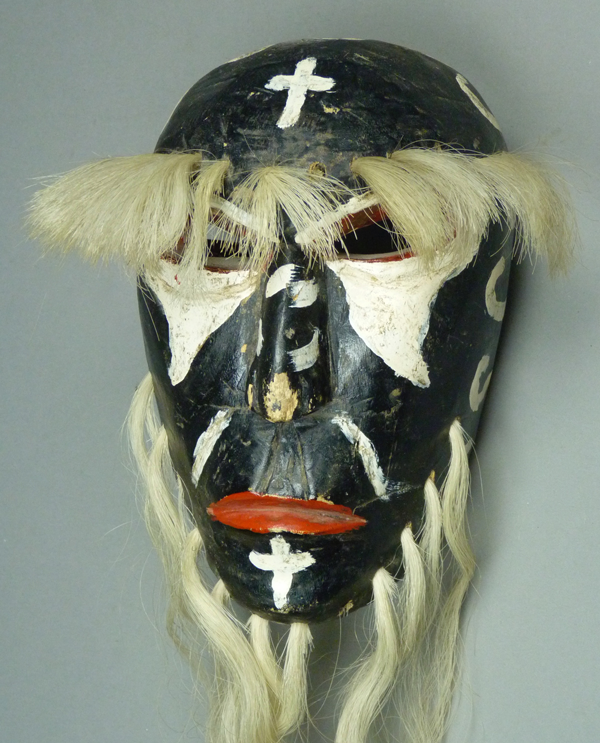This series of posts about Yoeme (Yaqui) Pascola masks began on July 4, 2016.
When I began attending the Yaqui Easter fiesta in Tucson, Arizona, beginning in 1989 and continuing over the next 25 years or so, I quickly discovered another Yoeme carver—Antonio Bacasewa. Although Antonio lived in Vicam, Sonora and he did not often travel to Tucson, his masks were widely available in Indian arts stores there, because they were being brought up from Sonora by some important Indian traders, Barney Burns and Mahina Drees. I will tell much more about that couple in a future post.
Antonio Bacasewa’s masks are notable because, although they were made for sale to whomever might want them, they were carved creatively in traditional designs from the usual wood—raíz de Álamo (cottonwood root). Furthermore they were smoothly finished and of normal size. That is, they were perfectly appropriate for dancing, and dancers frequently did buy these masks for their own ceremonial use. Yet Antonio’s masks were also inexpensive and interesting enough to attract tourists and collectors. While some other carvers made different styles of masks for these two potential markets, as I will vividly demonstrate in future posts, Antonio produced a uniform product that was suitable for both. I view Antonio as an important and innovative folk artist. He died in 1991.
Here is one of those undanced masks that I purchased from an Indian arts store in Tucson. I liked them so much that I bought many of them, over the years.
Note the graceful line of the cheek. I suppose that the animal painted on the side of the mask is a scorpion, or maybe this is just a lizard. From this angle the design of the mouth is interesting, even if anatomically doubtful. I cannot look at this mask without imagining a character with this face in the rain, catching raindrops with his extended lower lip. This is of course my own idiosyncratic idea, but it is grounded in the knowledge that the Yoemem (Yaquis) consider rain to be a sacred gift from the Sea Ania (the Flower World).




